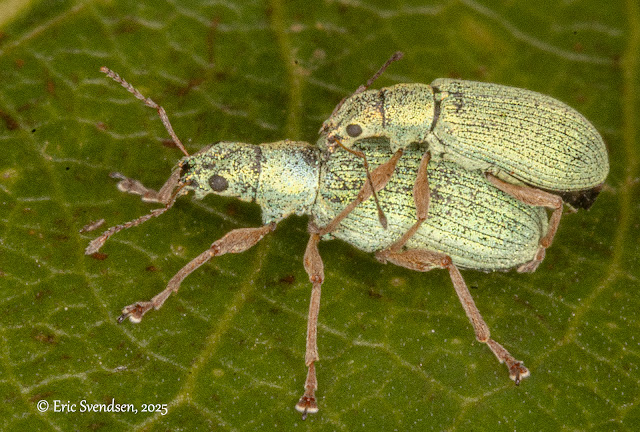Pale green weevil - Polydrusus impressifrons
We were camped just outside of Waterton National Park at a place called Crooked Creek Campground. It was a five minute drive to the park and turned out to be a great launching point for our adventures. I took some time while at the camp to look for any interesting insects to photograph and I came across a small, light green beetle. I used my macro equipment to capture images and then came upon more of them that were engaged with mating (see below).
The insects
were always found on leaves of the same kind of plant. They tend to prefer shrubs belonging to
willow (Silex) or poplar (Populus). They will eat the leaves of fruit trees and
can damage young trees. The same is true
for the grubs (larval form of beetle).
They burrow in the soil and feed on the roots of preferred
vegetation. Their presence does not
usually adversely affect the shrubs or trees themselves unless the plants are young.
These
weevils are not native to North America.
They arrived in North America in the early 1900s and have spread half
way across the continent since then. They
have not yet made it past the rocky mountains, although populations have been
found in Oregon.
The beetle
is a type of weevil. I found this
interesting because most weevils I have found have a long snout with antennae
sprouting off somewhere in the middle of it.
I could not find it in my field guides because it did not occur to me
that they were of that group of beetles.
In order to determine the species, I had to send a photo to Google Lens
which came back with a few possibilities.
Eventually I narrowed down the list to the one I am currently
discussing. Given that 30% of all the
species are beetles, it is not surprising that it wasn’t a simple task.
Thanks for reading.
Eric Svendsen www.ericspix.com





Comments
Post a Comment